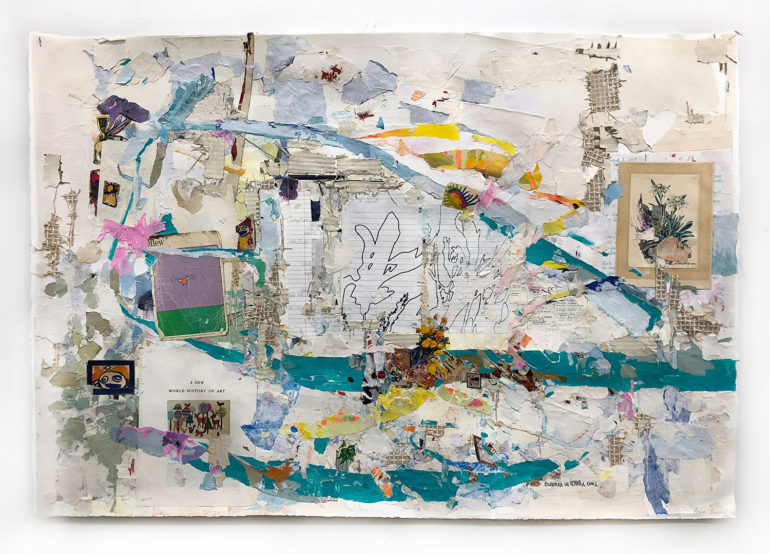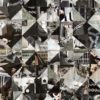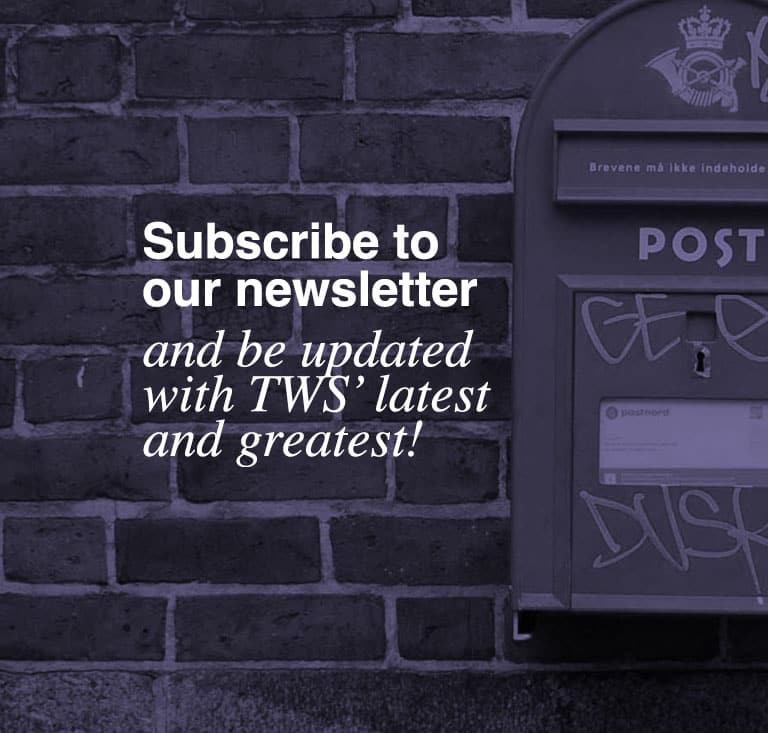Andrea Burgay is an artist and editor based in Brooklyn, New York
TWS –How are you doing in this Covid-19 pandemic?
Right now, I’m ok. I think was in shock for a while and really wasn’t sure what I should be doing. What do you do as the world falls apart while you’re supposed to stay at home? Things seemed really desperate here in New York City. As the apex approached the streets became almost silent except for the punctuation of frequent sirens. There were reports of so many deaths, overwhelmed hospitals and so many at risk. Fear for everyone and the fate of the city had me very anxious.
But over the last few weeks, I’ve been developing a new structure for my days and some daily rituals to help me cope—writing and talking to friends more. I’ve been doing better.
TWS –Are you being able to telecommute / work from home?
My day job is teaching and working in the administration for an arts non-profit in New York City public schools. No one was prepared for the schools here to close, but we’ve adapted and are now creating video lessons for our students to watch and make art at home. We can’t assume they have any materials so I just created a series of collage lessons that use paper from the recycling pile—no glue or scissors. The lessons focus on lots of tearing and arranging—things I’m very familiar with.
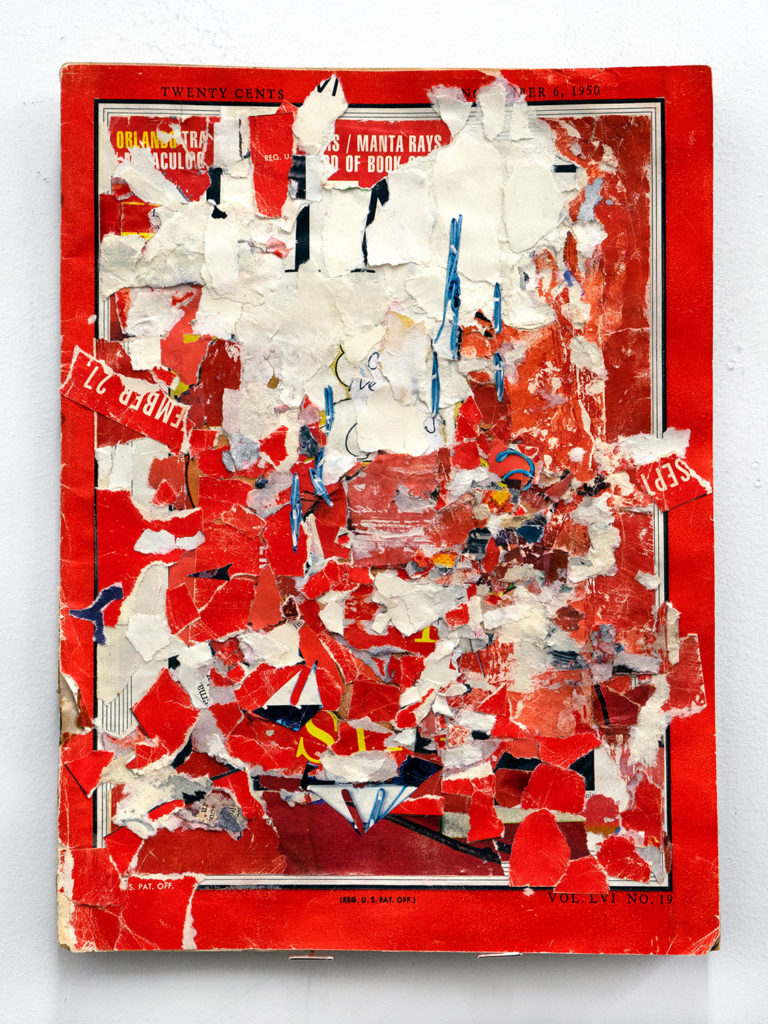
March 2020
Collage and decollage on vintage Time Magazine, UV glaze
11 1/4 x 8 1/2”
TWS –Did the lock-down affected your creativity and art making? How?
I remember the initial stages of the outbreak here, checking the news every hour to hear what new measures were being taken and what was being shut down. I was in my studio, working on several dense collage pieces reworking magazine covers, just trying to get out of my mind and into the work. Those pieces definitely carry a lot of channeled anxious energy—breaking things down into very little pieces and rebuilding.
I am very happy to still be able to get to my studio, which is a short walk away, and continue working. My process often leans into dealing with difficult emotions, revealing the complexity of our experiences. So making art during this time hasn’t been difficult, but I have shifted towards making works that can most embody the feelings that I’ve been coping with. There’s definitely a bit of guilt at being able to do this—I just read the title of an online exhibition “How can you think of art at a time like this?” But this is how we as artists process, reflect on and share our experience of this time.
On another note, the day that I received your email, it was announced that one of my favorite galleries here in New York, Lesley Heller, would not reopen. Though I love the immediacy of sharing work online, it’s very important to me to show work in a physical space so that the scale of the work, the texture and layers, can be experienced in person. But I know that the arts world that I’ve known here in NY will be very different when all this is over and I have no idea when will be the next opportunity for me to share these works in person.
TWS –Are you able to track positive moments or things that happened during this crisis so far?
For a while now I’ve been working on developing a positive habit where I notice and record good things that happen. And now that my life has become more insular, I’ve been appreciating small things even more, especially coffee and comedy movies. I’ve been having a weekly baked exchange with a few of my best friends, which has been sweet. And I’ve been inspired by checking in and connecting with artists and curators to hear about what they’re working on, how they’re keeping up the momentum of examining the world we have now, and working with the means we have available.
I’ve also been working on the next issue of Cut Me Up with guest curator Valerie Hegarty, based on the theme “Envisioning Utopia”. The theme, though chosen long before all this happened, is fitting for this moment as I believe we all need some vision of an imagined future to look forward to, no matter how far away it may feel. I’m glad to have this opportunity available for artists to share their amazing visions and a venue to show a curated exhibition that can still exist as long as the printer and the Post Office are functioning.
TWS –What’s the first thing you would like to do when we can get back to normal?
Get out of the city, get to the ocean and eat oysters or fried seafood with my friends and family.
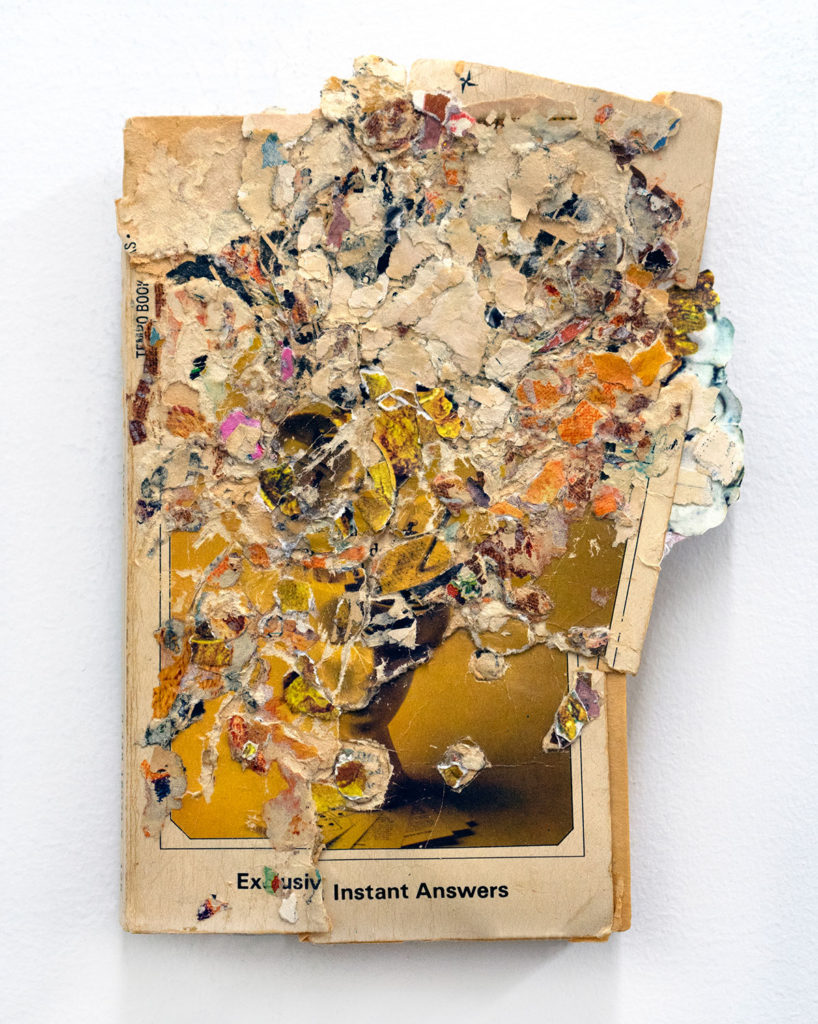
April 2020
Collage and decollage on found book, UV glaze
7 1/4 x 5 1/2 x 1”
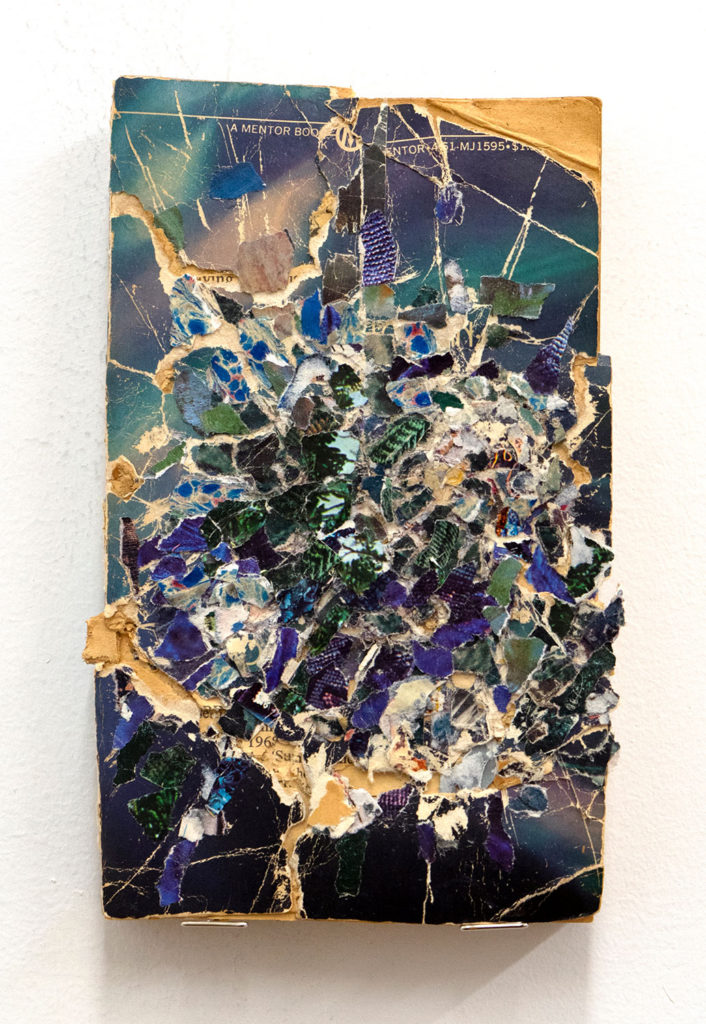
March 2020
Collage and decollage on found book, UV glaze
7 1/4 x 4 3/8 x 1”
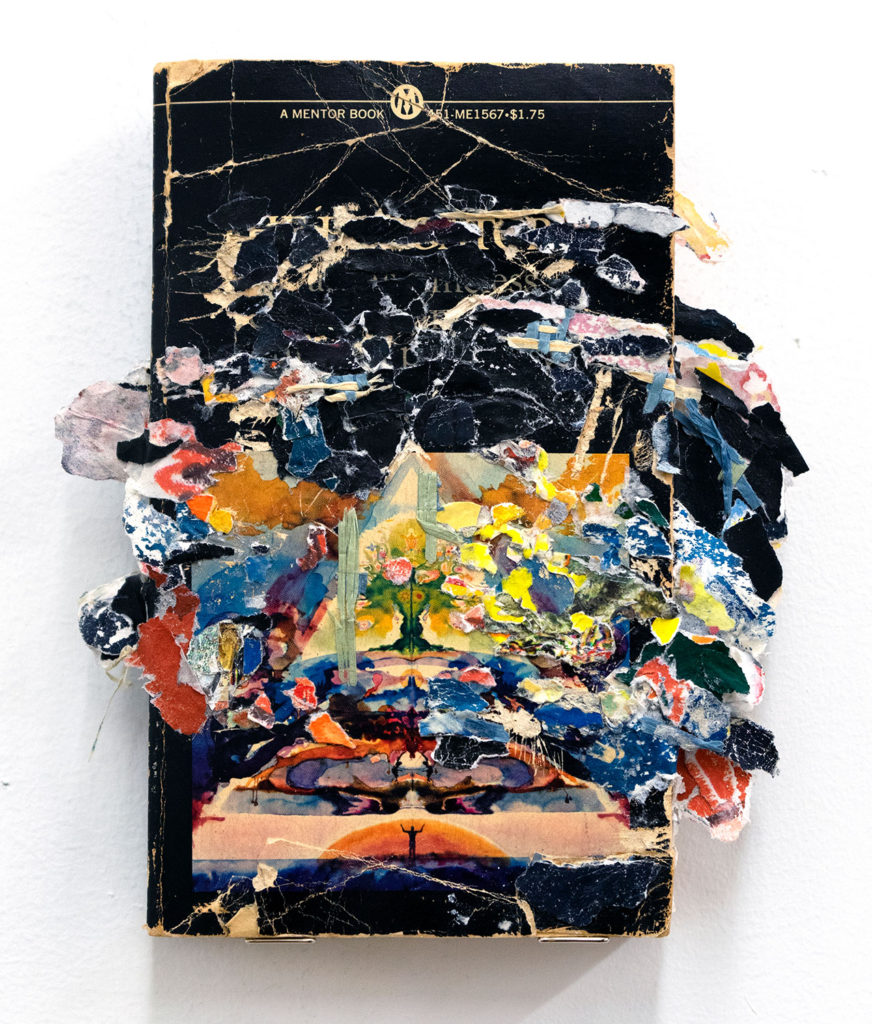
2020
Collage and decollage on found book, UV glaze
7 x 6 1/2 x 1”
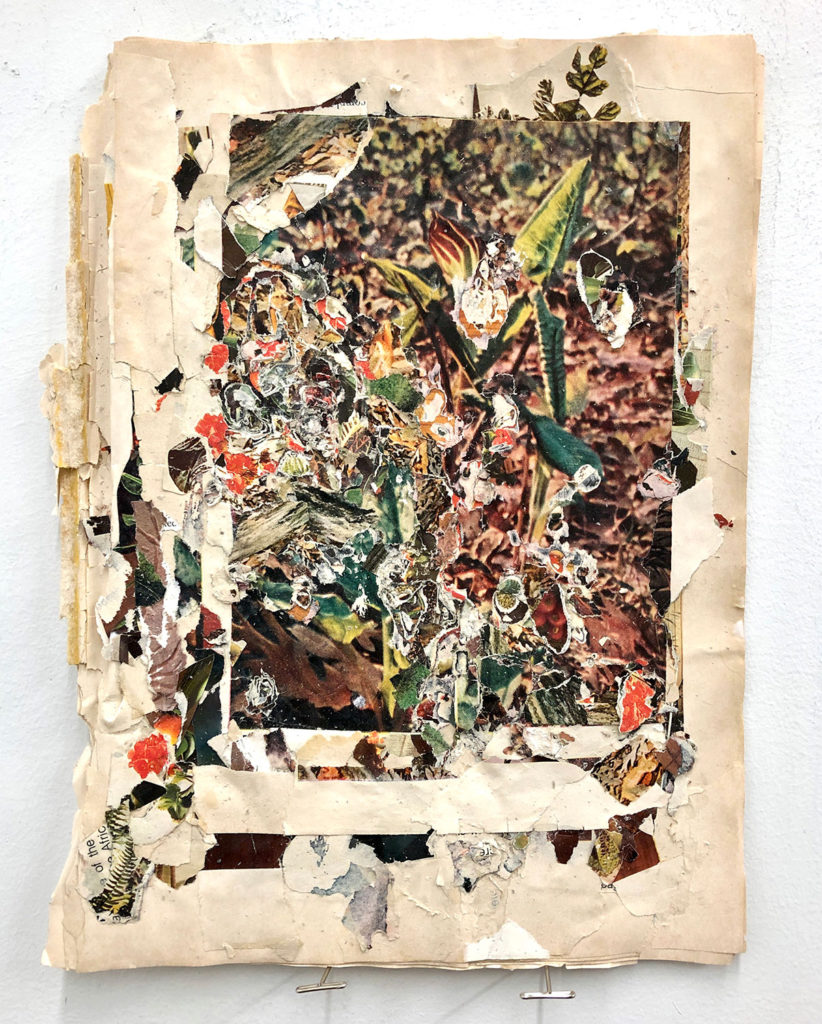
2020
Collage and decollage on vintage magazine, UV glaze
10 x 7 1/2”

